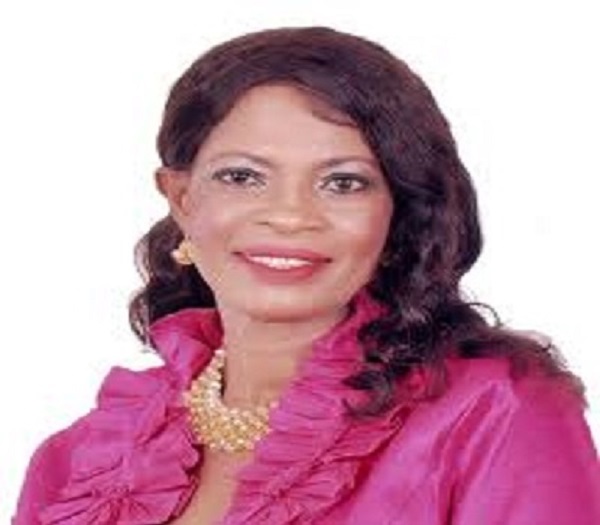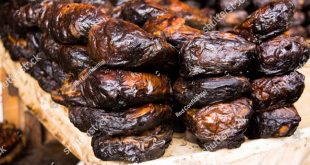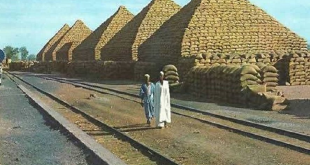
Engr. (Mrs.) Janet Adeyemi is the President of Women in Mining, Nigeria and also a 2017 inductee into the MMS Woman of Fortune Hall of Fame (WoFHoF) initiative. During the recent Nigeria Mining week which took place in Abuja, she delivered this astute paper touching several aspects of the mining profession in the nation with special interest on the opportunities for women in the sector. Enjoy it:
Nigeria was a major mining destination before the advent of crude oil. Nigeria was in the forefront of mining tin, columbite, Gold and Coal which was the major source of revenue generation for the country.However, the gradual reliance and eventual total dependence on crude oil led to the total neglect of two sectors which are mining and agriculture. Tin and columbite were mainly found around Jos, Plateau state, while gold was found around Ilesha, Birin –Gwari and some other locations and coal was found around Udi hills in Enugu. There is a detailed geology map of Nigeria with detailed locations of the main mineral resources found in Nigeria.

This very short paper wants to highlight the importance of women in the mining industry and make it known that women are equally not new in the industry by appraising the roles of Berom women in the mining activities of Jos in the time past and now. Under colonial rule,women participated as unskilled lowest paid laborers which included carrying, washing, picking tin and pottering as well as auxiliary jobs such as local trade in food, firewood, beer brewing and a host of entertainments that helped retain mine laborers in the camps as long as possible (Dr. H.A Alahira paper dwells extensively on this). Tin mining also added extra burdens to the traditional roles of Berom women in both domestic and agricultural work.
Even though a lot of information abounds on tin mining in colonial records, from the library of the Amalgamated Tin Miners, Bukuru and secondary sources there is very little documented data on the role of women in the tin mining industry. It was the deliberate policy of the mining companies not to give any official statistics of mine laborers by sex because the international labor conventions outlawed the employment of women and children in underground mining. Female labor was cheaper compared to that of men and women though numerically small provided a significant component of mine labor on the Jos Plateau. There is dearth of data on the actual role of women in the mining industry except for those revealed by informants from oral interviews and because of the secrecy of the information on women’s labor in official records, the author relied more on evidence from oral interviews. The first official estimate had the number of women engaged in tin mining in 1943 estimated to be around 62,667. Women were brought in supposedly as cooks compared to the total mine labor force of 75,669. This figure is very misleading because it did not in reality reflect the number of women brought in from the Northern Provinces as cooks for the mine laborers but the figure did include women that worked as unskilled laborers in the mines.

Dr. Alahira’s paper on the role of women in the industry examined the role of Berom women in tin mining at two levels. Firstly, at the level of the specific tasks that women performed and secondly the implication of men’s involvement for women who were left behind at home. The organization of labor in the tin mines was done on tasks basis. This was a very effective way of exploiting labor. All the unskilled casual laborers who mostly outnumbered the conscript or permanent laborers throughout the colonial period were employed on tasks basis. The mine managers preferred to give laborers work on task basis because it reduced the task of labor supervision. Labor work in the mines was meticulously separated into simple to the most difficult and from unskilled to skilled jobs. Most of what was considered skilled jobs such as artisans, clerks, drivers, electricians, carpenters, supervisors, managers and operators of mining machineries (e.g. generators, dredges, sluices etc.) did not require the use of much manual labor. These were the best paid jobs which were done by workers from Southern Nigeria and other countries from the West African sub-region who had acquired some form of formal or rudimentary/elementary education. Almost all the Berom labour force and their counter part from the Northern region were regarded as unskilled laborers who did most of the difficult, energy exacting jobs but which was the least paid jobs. These included digging, carrying of earth and washing of tin through panning. The tin washing which involved more women particularly posed a very serious health hazard to mine laborers because it required standing in cold water for several weeks or months. They contacted diseases such as jiggers, pneumonia, guinea worms etc. Cooking was also regarded as unskilled job. There were also other services that were rendered in the mining camps, which helped to retain labor in the camps much longer than usual. This included trading, beer brewing, prostitution, gambling and a host of entertainments such as the “goge” music, Hausa drummers and the Berom “kundung” dancers. Among the tasks mentioned above, there were those that were done solely by women and those that were done by both men and women. Families were engaged in mining as a team. The husbands normally did the digging while wives and children carried the earth and also washed out the tin manually until the introduction of machine in the 1930s which came to be used minimally because of the high cost. Because most families were polygamous the ratio of men to women in the carrying of earth in the tin mines was 1:4 (one man to four women).

As at 2006, Ray field in Jos was dominated by women in search of tin working in the scorching sun with their infant babies unprotected. In every mining community you visit, you find women actively involved in the process of mining.
Way forward: Nigeria cannot afford to continue the restrictions or discriminations of the time past which restricted women from participating in economic ventures that would enhance the wellbeing /livelihood of the girl child, knowing fully that the result of underdevelopment is poverty which in turn has adverse consequences on the family’s overall wellbeing. Every nation of the world through various policies are creating the opportunities for the development of their economies by ensuring equitable participation of all stakeholders irrespective of gender and ensuring that the gross marginalization is ameliorated through various gender policies. Some of such policies and legislations are “Women on Board/management position’, accrued benefits for those who engage more women into companies or engage in providing services, ensuring that equal participation rights are accorded women in conferences in addition to various legislations that ensured their progressive increase and participation in the sector. The World Bank and their various extractive industries initiatives actually monitors these policies and the progress made by women in the sector
Strategy adopted by successful mining destinations to attract and retain women in the sector
RECOMMENDATIONS:
Management continuous support to the course of gender mainstreaming is key, thus it is recommended that they consistently support this course through adequate budgetary allocations and monitoring of progress.ü
Gender units should be established at the headquarters and state levelsü
Staff awareness on gender and gender mainstreaming in the mining sector should be raiseü
Staff and management capacity should be built on gender mainstreaming and gender analytical skills, especially in the case of the technical department staff and the ASM officers. Information on gender mainstreaming should be disseminated to all staff and managementü
There should be balanced participation between men and women in the decision-making positionsü
Management should institute an accountability system to monitor performance. In other words, incentives and consequences for gender mainstreaming performances should be developed. In the absence of any accountability process, gender mainstreaming may not move beyond its present level.ü
Management should collaborate with relevant national and international agencies and NGOs in building the capacities/skills of women at the mining and ASM levels and to sensitize women on the need to participate the mining sectorsü
The Ministry should collaborate with relevant agencies such as the World Bank and the Federal Ministry of Women Affairs and Social Development for technical assistance in promoting gender mainstreaming and women empowerment in the sector.ü
MMSD should consider waving certain fees and procedures for women’s groups in the ASM so as to encourage them to registerü
Mobile licensing services should be established for women in the ASM sectorü
Specific mineral locations should be allocated to women ASM operators to encourage more women’s groups to participate in the sectorü
Women’s economic development and women in mining enterprises should be promoted by establishing women in mining empowerment centres in the ASM communities.ü
Women in mining cooperatives should be formed and linked to national and international mining networks for supportü
These groups should be linked to sources of finance and market to promote their business(value-chain development)ü
Strategies Option for Gender
Decisive action to implement system and processes that directly address identified gaps in the sector should be taken. This includes but it is not limited
– Developing policies and practices that will enable men and women to participate equally as employees of MMSD its agencies and mining companies
– Mainstreaming gender into all policies, activities extension services throughout the mining sector
– Developing the capacity of MMSD and agencies staff to mainstream gender in all their organizational activities and programs
– Enhancing MMSD’s capacity to generate detailed and accurate information on the situation of women and men for the planning
– Addressing cultural and religious issues and accurate information on the situation of women and men for planning
– Promoting women’s economic development and women in the mining enterprises
– Supporting the promotion of the rights of women in the ASM mining sector
– Strengthening the relationship between MMSD, the World Bank, development partners, MDAs, civil society organization and mining cooperatives in order to promote gender mainstreaming and women’s empowerment in the sector
– Supporting a network for female student at tertiary and secondary levels to facilitate their exposure to positive female role models and sectors success stories
Copyright MMS Plus.
All rights reserved. This material, and other digital content on this website, may not be reproduced, published, broadcast, rewritten or redistributed in whole or in part without prior express written permission from KINGS COMMUNICATIONS LIMITED.
 MMS PLUS NG – Maritime, Aviation, Business, Oil and Gas News Online Newspaper with coverage in Maritime, Oil and Gas, Aviation, Power and Energy as well as Financial News
MMS PLUS NG – Maritime, Aviation, Business, Oil and Gas News Online Newspaper with coverage in Maritime, Oil and Gas, Aviation, Power and Energy as well as Financial News









